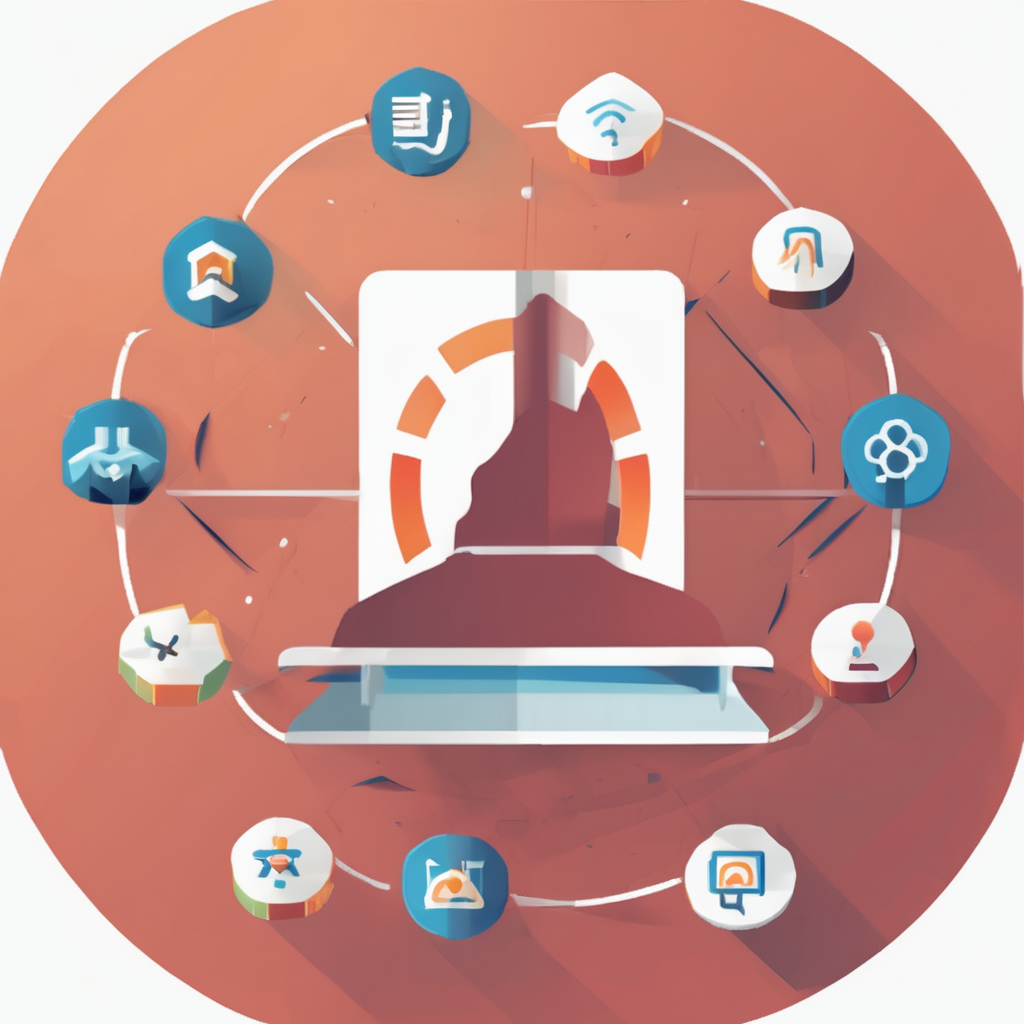Unleashing Your Smartphone’s Power: Top Techniques for an Enhanced Augmented Reality Gaming Experience
In the ever-evolving world of gaming, augmented reality (AR) has emerged as a game-changer, blurring the lines between the digital and real worlds. With the advancements in smartphone technology, creating and enjoying immersive AR gaming experiences has become more accessible than ever. Here’s a comprehensive guide on how to unleash your smartphone’s power to enhance your AR gaming experience.
Understanding Augmented Reality in Gaming
Augmented reality in gaming is about enhancing the real world with digital elements, creating a unique and interactive experience. Unlike virtual reality (VR), which immerses users in a completely digital environment, AR integrates digital content into the real world, making it more relatable and engaging.
In parallel : Unlocking the art of smartphone photography: key strategies for taking breathtaking photos with your mobile device
“AR in gaming employs real-time digital overlays on a player’s environment, enabling interactive experiences,” explains the guide from BytePlus. This technology has been popularized by games like Pokémon GO, which encourages players to explore their surroundings while interacting with digital characters[1].
Key Technologies Powering AR Gaming
Several technologies are crucial for creating immersive AR gaming experiences. Here are some of the key ones:
Also to discover : Smartphone savvy: seamless management of smart home air purifiers for cleaner indoor air
AR SDKs
Software Development Kits (SDKs) like ARKit for iOS and ARCore for Android provide the necessary tools and frameworks for developing AR applications efficiently. These SDKs simplify the development process, allowing developers to focus on creativity rather than technical challenges.
Computer Vision
Computer vision enables devices to interpret and understand visual information from the real world. This technology is crucial for tracking real-world objects and overlaying digital elements accurately. For instance, apps like ClipDrop use computer vision to quickly digitize real-world items into 3D objects[2].
GPS and Location Services
Many AR games rely on GPS to create location-based experiences. By utilizing location services, developers can design games that encourage players to explore specific areas, enhancing engagement and interaction with the real world.
3D Modeling
Creating realistic 3D models is essential for a compelling AR experience. Tools like Blender and Unity3D allow developers to design and integrate 3D assets seamlessly into their games.
Tips for Developing AR Games
If you are an aspiring developer or looking to enhance your AR gaming experience, here are some essential tips:
Start Small
Begin with a simple project to familiarize yourself with AR technology. Gradually expand your project as you gain confidence and experience. This approach helps in understanding the nuances of AR development without feeling overwhelmed.
Focus on User Experience
Ensure that the AR elements enhance rather than detract from the gameplay. A user-friendly interface and smooth interactions are crucial for retaining players’ interest. “A user-friendly interface and smooth interactions are crucial for retaining players’ interest,” advises the BytePlus guide[1].
Test Extensively
AR games can behave unpredictably in different environments. Conduct thorough testing in various real-world scenarios to ensure a seamless experience for your players.
Leverage Community Feedback
Engage with your audience early in the development process. Gathering feedback can help you refine your game and tailor it to the preferences of your target audience.
Enhancing Your AR Gaming Experience with Mobile Devices
Mobile devices have become the primary vehicles for delivering AR experiences due to their widespread availability and advanced capabilities.
Geospatial API for ARCore
Google introduced a new API for geospatial experiences in 2022, allowing developers to create experiences tied to specific locations in space. This API works by comparing images of the surrounding area to Google Street View images to determine a specific location nearly instantaneously[2].
ARKit 6 Enhancements
Apple’s ARKit 6 upgrade introduced several new features, including 4K video recording while ARKit content is in use, enhanced depth API for more realistic scene occlusion, and improved motion capture. These features, combined with Apple’s LiDAR scanner, enable quick and accurate AR experiences[2].
Practical Examples of AR in Gaming
Here are some practical examples that illustrate the power of AR in gaming:
Pokémon GO
Pokémon GO is a landmark example of how AR can transform gaming. By overlaying digital Pokémon onto real-world locations, the game encourages players to explore their surroundings, making the experience both interactive and immersive.
IKEA Place
IKEA Place is another example, though not a game, it showcases how AR can be used to enhance real-world interactions. This app allows users to virtually place furniture in their homes to see how it would look before making a purchase. This concept can be applied to gaming by allowing players to interact with virtual objects in their real-world environment[3].
Integrating AI for Better AR Experiences
Artificial intelligence (AI) plays a significant role in enhancing AR experiences by simplifying complex algorithms and making sensor data interpretation more accurate.
ClipDrop
ClipDrop is an app that uses AI to quickly digitize real-world items into 3D objects. This technology can be applied in gaming to create more realistic and interactive environments. For instance, players could scan real-world objects to import them into the game, adding a new layer of realism and engagement[2].
Future Trends in AR Gaming
The future of AR in gaming looks promising, with several trends and technologies on the horizon.
Avatars and Virtual Meetings
The use of avatars in AR is becoming more sophisticated. Companies like Geenee AR and Ready Player Me are working on integrating avatars into AR experiences, which could revolutionize virtual meetings and social interactions. This technology allows users to ‘wear’ their avatars on camera, enhancing the hybrid meeting experience[2].
Integration with the Metaverse
The integration of AR with the metaverse is a key trend. This will create dynamic, computer-generated environments for interaction, further blurring the lines between the digital and real worlds. In e-commerce, for example, AR can be used to create virtual try-on experiences and interactive product visualizations, enhancing the shopping experience across various industries[4].
Table: Comparing Key AR SDKs
Here is a comparative table of some key AR SDKs:
| SDK | Platform | Key Features | Use Cases |
|---|---|---|---|
| ARKit | iOS | Facial tracking, motion tracking, LiDAR scanning | Gaming, Home decor apps (IKEA Place) |
| ARCore | Android | Motion tracking, environmental recognition, geospatial API | Gaming, Virtual try-ons (Wanna Kicks) |
| Vuforia | Multi-platform | Content encryption, secure authentication, AI integration | Business solutions, E-commerce apps |
| Wikitude | Multi-platform | Geolocation, image tracking, object recognition | AR mobile apps, Prototypes |
In conclusion, augmented reality in gaming presents a wealth of opportunities for both developers and players. By understanding the technology, leveraging the right tools, and focusing on user experience, you can create engaging AR experiences that captivate and engage your audience.
“By leveraging advanced tools and solutions, developers can focus on creativity while ensuring their products are optimized for growth,” notes the BytePlus guide. As devices become more powerful and AR technologies evolve, the future of AR in gaming is set to revolutionize the industry, offering new dimensions of gameplay that blend seamlessly with the real world[1].
Final Tips for an Enhanced AR Gaming Experience
- Stay Updated: Keep an eye on the latest advancements in AR technology and SDK updates to ensure you are using the most current and powerful tools.
- Engage with Community: Feedback from players is invaluable. Engage with your community to refine your game and make it more enjoyable.
- Test Thoroughly: Ensure that your game works smoothly in various real-world environments to provide a seamless experience.
- Focus on Creativity: With the technical aspects handled by SDKs and other tools, focus on creating innovative and immersive content that enhances the real world.
By following these tips and embracing the potential of AR, you can unlock new dimensions of gameplay that captivate and engage your audience, making your smartphone a powerful tool for immersive gaming experiences.











